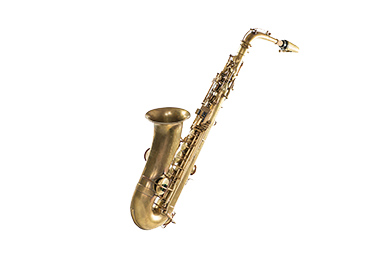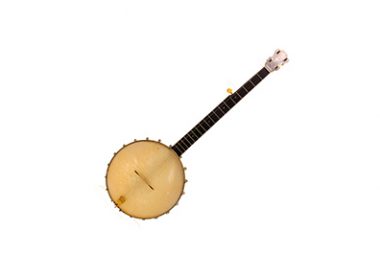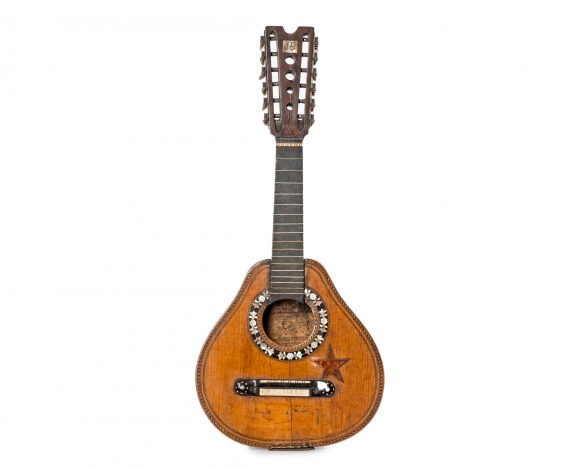


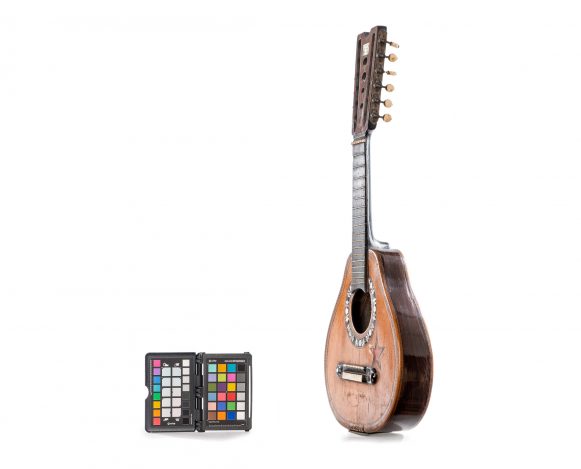
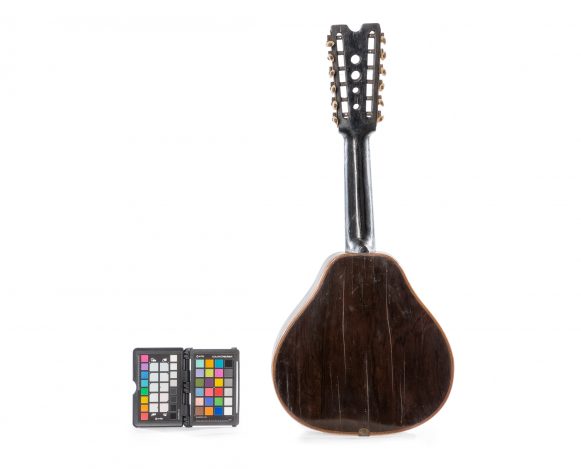
Hybrid instrument consisting of a bandurra body and a guitar neck similar to the Portuguese guitar. It has twelve machine heads, as well as bridge and nut, made of mother-of-pearl. The tuning is the same of a guitar: E2- A2-D3-G3-B3-E4.
The bandurria is an instrument with strings picked by a plectrum. It has a hybrid form mixing the guitar and the cittern families, found in Spain and in some parts of Latin America. In the 16th century it had a convex body and three strings, the most recent specimens have five or six strings tuned in intervals of fourths.
This item from Museu Instrumental Delgado de Carvalho is a hybrid chordophone that brings together the characteristics of the bandurria, acoustic guitar and electric guitar and was built by renowned luthier João dos Santos Couceiro.
BASE MINERVA, 2014.
BETHENCOURT; BORDAS; CANO; CARVAJAL; SOUZA; DIAS; LUENGO; PALACIUS; PIQUER, ROCHA, RODRIGUEZ; RUBIALES; RUIZ, 2012.
BRANDÃO, 2013.
PAULO SÁ, 2014.
ROLLA, 1974.
SADIE, 1994
SOARES, 1990.

